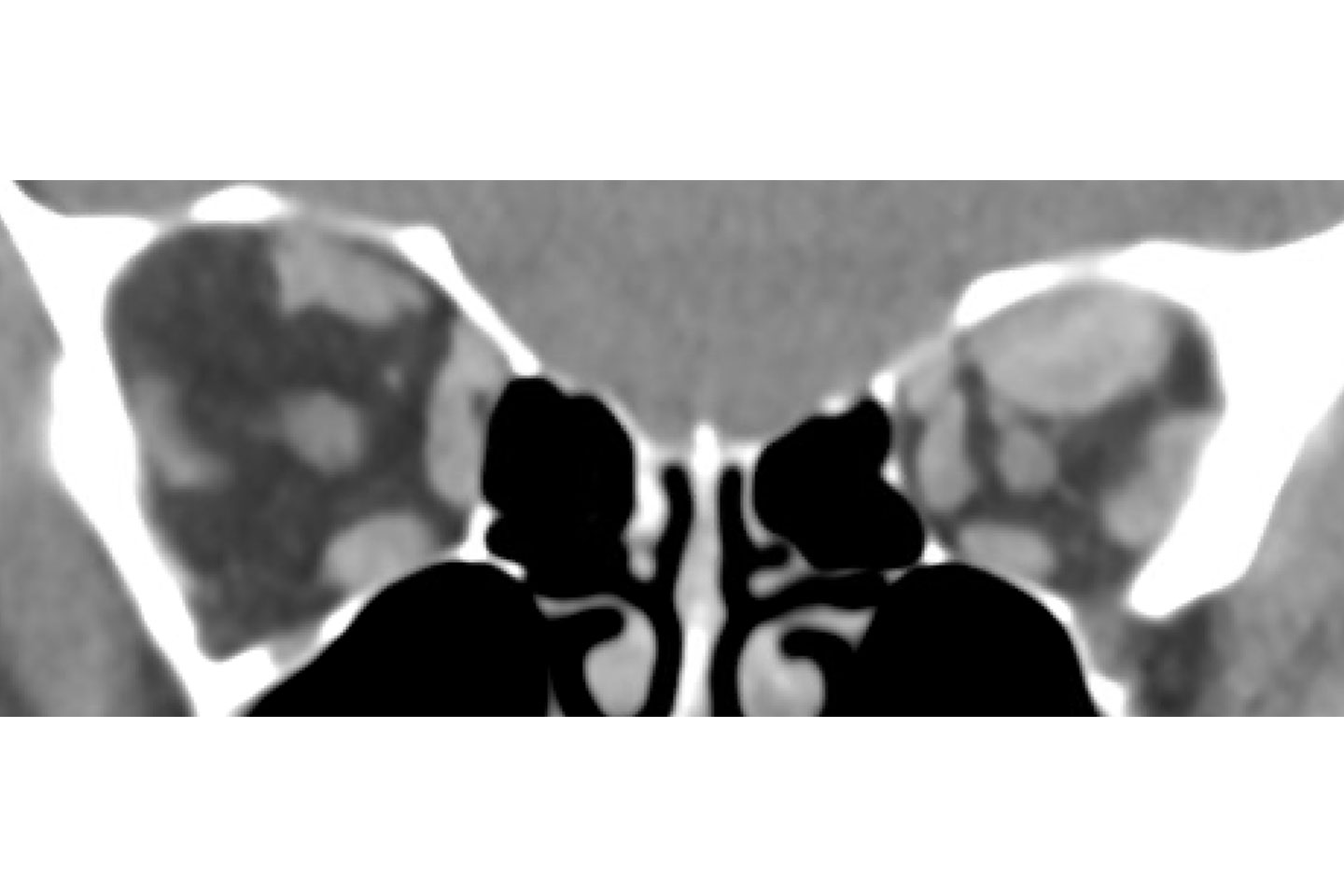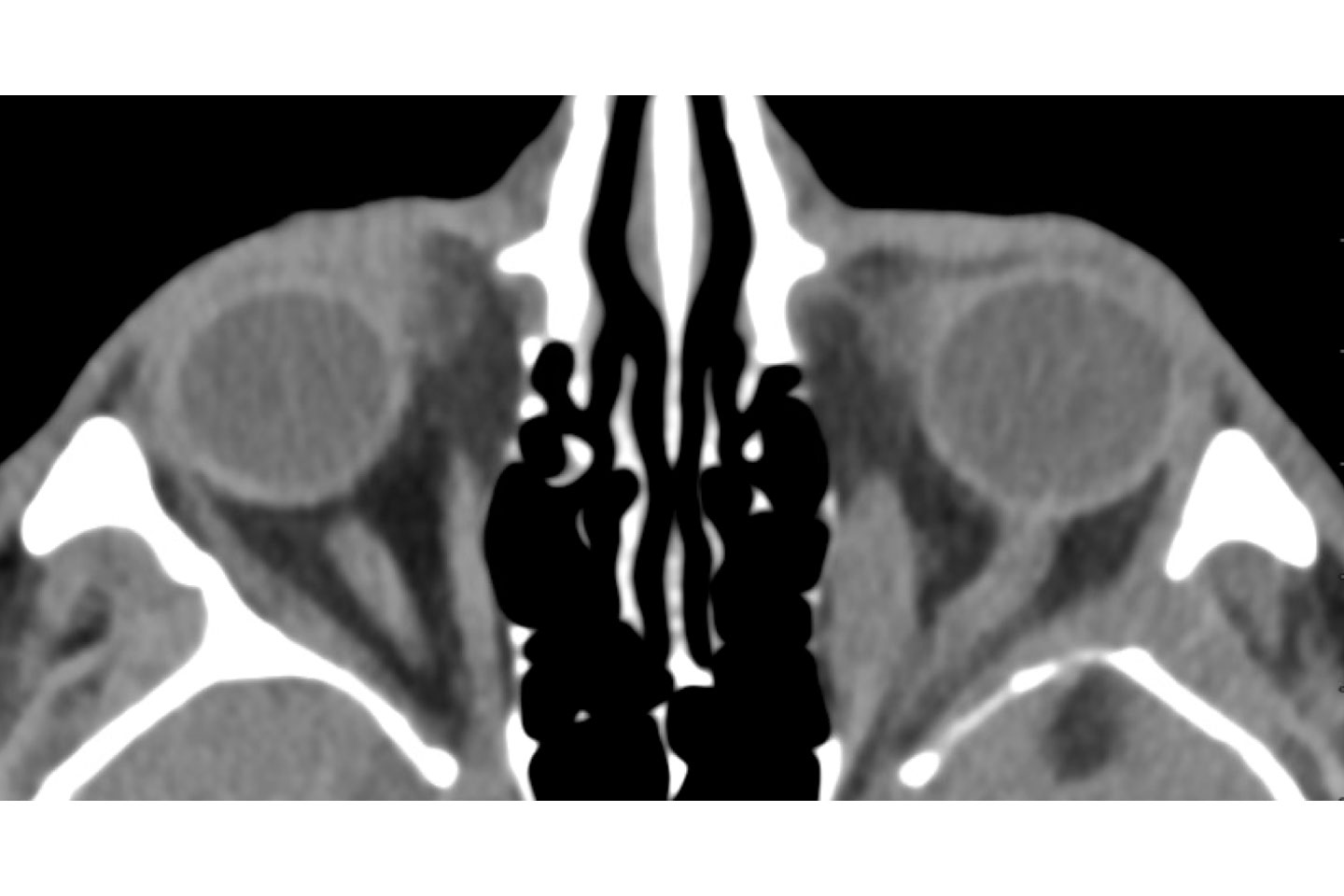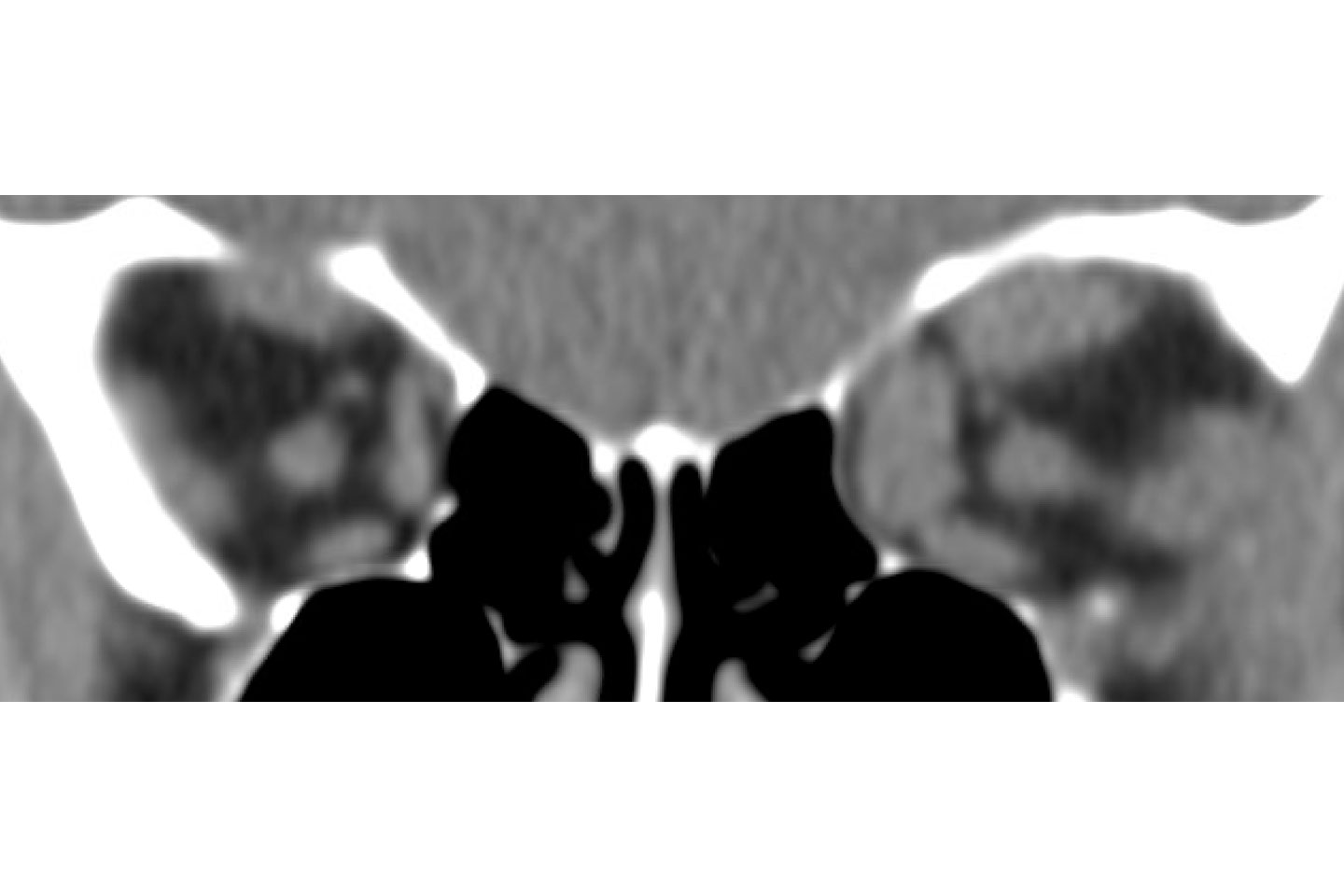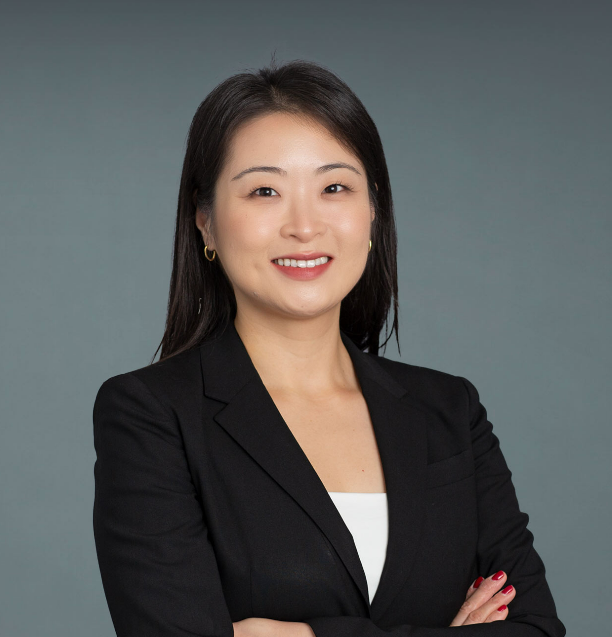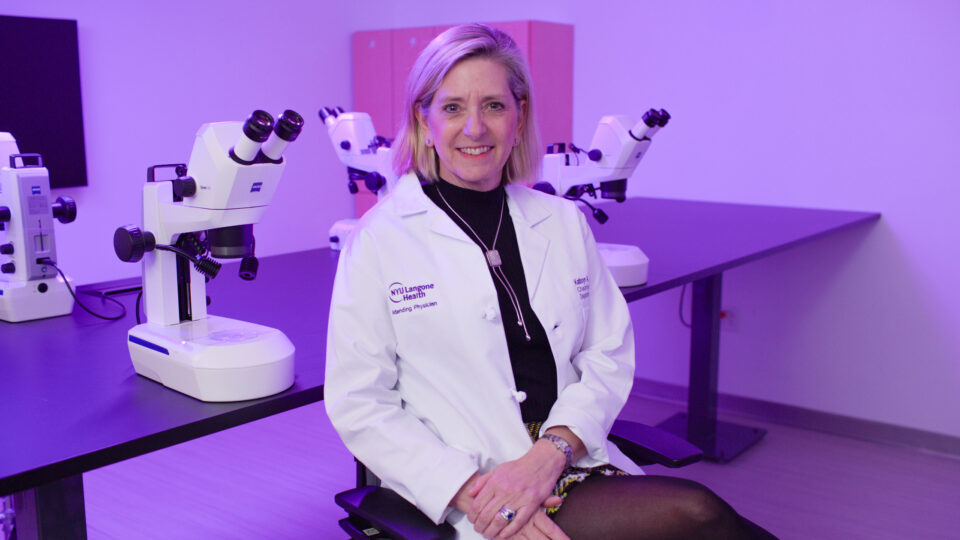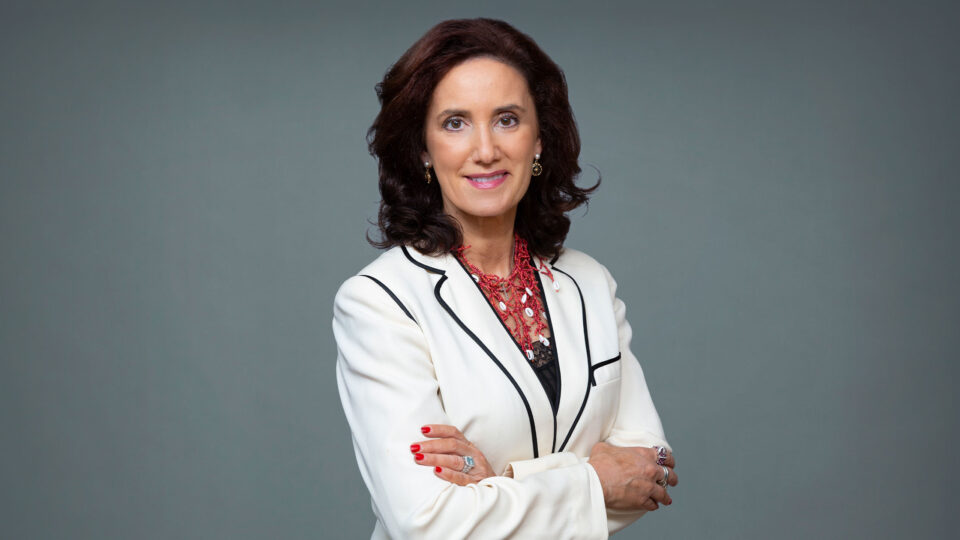For the medically complex and poorly understood autoimmune condition known as thyroid eye disease (TED), oculoplastic surgeon Stella Chung, MD, has championed the importance of monitoring regularly and taking flareups seriously. A recent case highlights both the danger of unaddressed symptoms and the potential of thorough exams to bring relief to patients with severe forms of the disease.
In November 2023, a woman in her 70s who had been previously diagnosed with Graves’ disease presented at NYU Langone Health with severe TED. Doctors had initially treated her with the biologic infusion teprotumumab, an antibody that targets the insulin-like growth factor 1 receptor (IGF-1R) to block orbital socket inflammation, but the patient was unable to tolerate the treatment.
After seeing multiple ophthalmologists in the New York region, the patient chose to see Dr. Chung, who had recently completed an American Society of Ophthalmic Plastic and Reconstructive Surgery fellowship, due to her unique depth of knowledge about TED. Dr. Chung brought with her a whole-body approach that she says optimizes patients both medically and psychologically, and gives treatments the best chances for success.
“You have to address the psychology of these patients who look different than they used to.”
Stella Chung, MD
“It’s not an easy disease to treat. It can be medically complex and you have to address the psychology of these patients who look different than they used to; it can be very distressing,” Dr. Chung says. “I have good rapport with my patients and a good listening ear and can be supportive not just emotionally but also medically and surgically. I was quite confident that I could bring some of the newest technologies and findings as well.”
A Whole-Body Approach
The first step in treating patients, she says, is to determine whether their thyroid levels are optimal. If not, find out why, and consider whether a thyroidectomy is necessary. Systematic inflammation also must be addressed and can be tamped down temporarily with steroids in severe cases.
Although the patient had undergone a thyroidectomy within the last few years, her anti-thyroid antibody levels remained high (later tests suggested that a residual portion of her gland remained). “Her body was still in a very actively inflamed state and she was losing vision. She really had no useful vision in the right eye when I saw her,” Dr. Chung recalls.
Although early symptoms can be relatively nonspecific, the inflammation can spread to the eyelids and then the muscle and fat within the orbital socket. Acute inflammation in the socket’s limited space can compress the optic nerve and prevent it from receiving enough blood and oxygen. Patients may start losing vision or seeing double due to eye misalignment. In severe cases, optic nerve fibers start to die, causing irreversible damage.
“When one eye is bulging and it’s not moving well, it’s scary, especially when all the blood work looks perfect.”
“Her eye was bulging and she had compressive optic neuropathy,” Dr. Chung says of the patient. “We did an orbital decompression to remove part of the socket.” The surgery created more room for the orbital tissue to expand sideways, relieving compression on the optic nerve and restoring the flow of blood and oxygen.
The patient, Dr. Chung says, responded extremely well. “Her eyeball, which was really bulging, went back about 4 to 5 mm or so, and that’s pretty huge,” she says. “It is a big difference in the way you look. Her vision cleared as well.”
An Effective Supplemental Therapy
To achieve the maximum benefit, Dr. Chung also restarted the patient on the teprotumumab infusion to see whether she might tolerate it better as a supplemental therapy. Patients who have both the surgery and the infusion tend to have the best outcomes, Dr. Chung says, while some patients who only receive the infusion still experience flareups. She has launched a research project to understand why.
The patient tolerated the post-surgery infusion well and now has 20/20 vision in her right eye, with no subsequent flareups. She has experienced some inflammation in her left eye but elected not to have orbital decompression surgery on it. Dr. Chung suspects that a cold and pneumonia may have contributed to a temporary flare and is continuing to monitor it.
Through careful exams and imaging, Dr. Chung has also diagnosed a few patients with euthyroid thyroid eye disease. Despite normal thyroid hormone levels, such patients still have symptoms of TED, such as bulging eyes, which can act as a sentinel event.
“Euthyroid thyroid eye disease means that within two years, the patient has about a 12 to 24 percent chance of developing hyperthyroidism or hypothyroidism. It’s just that the eyes are acting out first and are the first symptoms,” she says. “When one eye is bulging and it’s not moving well, it’s scary, especially when all the blood work looks perfect. It’s pretty incredible for these patients to have answers.”
View the Slideshow below for images from a related case.




